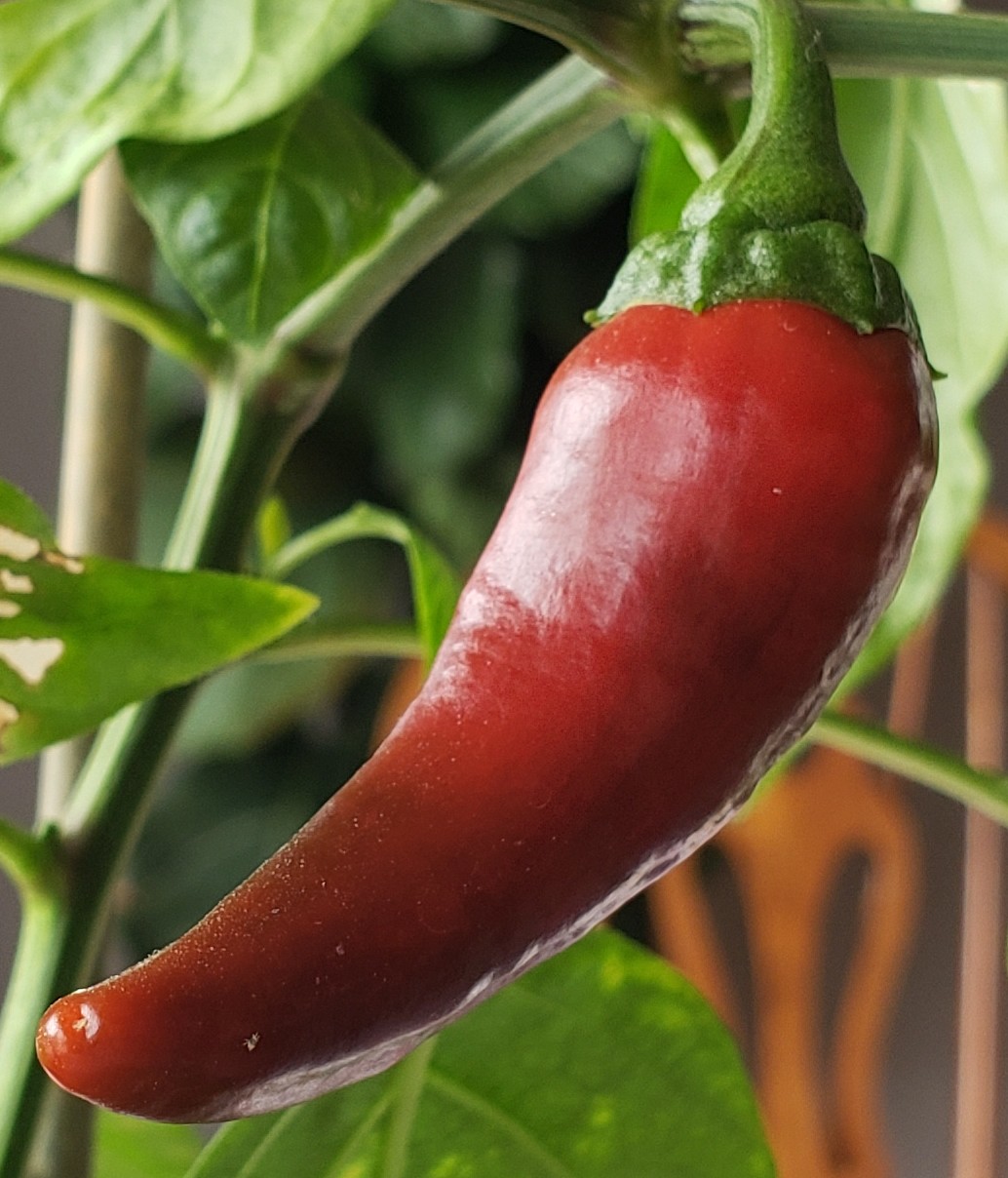Whorish_Ooze [none/use name]
- 24 Posts
- 136 Comments
Not necessarily. LGBT rights in Argentina are among the best, while they lag quite a bit in South Korea.
- Whorish_Ooze [none/use name]to
 ·4 years ago
·4 years agoYeah, plus it makes it more malleable. I was originally using tin but it kept making it way too brittle, so I tried bismuth and it worked like a charm. Plus I like subtle visual characteristics it imparts on the alloy. Bismuth Bronze is a thing too, so it seemed like it'd have potential to me.
- Whorish_Ooze [none/use name]to
 ·4 years ago
·4 years agoOh yeah, I used sandpaper to like almost shapen one end down to a point, so that you can at least get a little bit through the hole, to grab on the other side with plyers, then pull the rest of it through. Its pretty tough and actually has been giving me a good arm workout :)
- Whorish_Ooze [none/use name]to
 ·4 years ago
·4 years agoLighter for scale https://i.imgur.com/kln4iNC.jpg
- Whorish_Ooze [none/use name]to
 ·4 years ago
·4 years agoits just a plate with a series of holes in it, each one ever so slightly smaller than the last. You pull wire through them, starting with the biggest, and it slowly slims your wire down to whatever gauge you want it to be. The holes are beveled on one side, kinda like this |\ /|, so it kinda helps it smoothly size down as you pull it
- Whorish_Ooze [none/use name]to
 ·4 years ago
·4 years agodepends on how much its eaten. If just had a wolf feast and is full, it'll probably turn into a half-moon.
- Whorish_Ooze [none/use name]to
 ·4 years ago
·4 years agoIf it came from a lab, it could probably be mutated from SARS-COV-1 or MERS-COV, as both of those were the most notable viruses that would be being studied in a lab. Instead, the virus appeared to come from the same lineage as wild viruses in the area. There's obviously a CHANCE that it could have by coincidence acquired all those same mutations as the wild population, but its so ridiculously small that it can be thrown out as signficiantly impossible.
- Whorish_Ooze [none/use name]to
 ·4 years ago
·4 years agoA scientific law? What the fuck are you talking about? I mean you could be sure with 5 sigma orso that an entity with this genome was designed by a person with a certain intent, or was the product of natural evolution. There's no such thing as knowing with absolute certainty in any kind of science, all you can do is reject the null hypothesis with n degrees of confidence. In this case, you can reject that SARS-Cov-19 was developed by artificial genetic manufacture within an acceptable degree of certainty.
- Whorish_Ooze [none/use name]to
 ·4 years ago
·4 years agoJesus bad faith much? Asking for sources and then not even waiting 10 minutes before going "see this guy doesn't have any sources." Cool your jets, not everyone is as terminally online as you are, I've sent you one, and yes its from before COVID was a thing so its not "tainted by any poltics that might have" or whatever
- Whorish_Ooze [none/use name]to
 ·4 years ago
·4 years agoThe preson I responded to specifically used the term "manufactured"
- Whorish_Ooze [none/use name]to
 ·4 years ago
·4 years agohttps://genomebiology.biomedcentral.com/articles/10.1186/gb-2008-9-3-r56
- Whorish_Ooze [none/use name]to
 ·4 years ago
·4 years agoYeah, there is. A engineered organism will show signs of "intelligent design", the genetic differences will be specifically just the ones chosen with intent to certain things. Evolutionary developed organisms are naturally selected random mutations that just happen to "work better", not necessarily best or well thought out. For example, there's no reason why a genetically engineered organism would have changes made it the 99% of its DNA (or RNA in this case) that's non-coding. Whereas evolution would collect changes to that 99% of its DNA along with any other beneficial changes to the coding part thats only 1% of its genome.
- Whorish_Ooze [none/use name]to
 ·4 years ago
·4 years agoyou're not actually serious, are you?The genome of manufactured organisms/viruses looks very different than that of ones that arise through natural selection. There are certain markers that will almost definiely give i away. Covid had no signs of being engineered. And something like "Well maybe they engineered it to make it look natural" is basically the same as saying "Maybe NASA built an actual rocket that had the capability of going to the moon, in order to fake the moon landing"
A "Sanctuary District" so to speak
- Whorish_Ooze [none/use name]to
 ·4 years ago
·4 years agoOh hell yeah! I used collect beach glass when I lived on the east coast. Some of the super smooth weathered pieces can be so pretty!
- Whorish_Ooze [none/use name]to
 ·4 years ago
·4 years agoI used a jewelry push drill, you can kind of see it in that one pic. The twisted screw-looking part makes the bit rotate as you push down on it, so if you rapidly push up/down, it'll spin pretty fast and drill into whatever you want. Its like a yankee drill, if you've ever used one of those. The one I got came with its own bits, and was only like $12. I imagine the bits are pretty universal, if you already have drillbits, you could probably get just the pushdrill without the bits for even cheaper. This is the one I got https://www.amazon.com/iBayx-Precision-Holders-Jewelry-0-8-3-0mm/dp/B083LPR854/ref=sr_1_4?dchild=1&keywords=push+drill&qid=1623130603&sr=8-4
- Whorish_Ooze [none/use name]to
 ·4 years ago
·4 years agoSorta! Its Mexican Amber, (from Chiapas, actually, of all places!) which is known to sometimes have blueish/greenish tints. If you do a search for Mexican/Chiapas amber, you can find other pics that have that same bluegreen sublte tint in it. I've found that it only really comes out in big thick pieces, the thinner ones just look straight up pale yellow/gold. Which makes me think it might be Diachromatic, like Pumpkin Seed Oil, so that those hues only come out in thick pieces.
And polished up, they can get pretty shiny. This pic shows it off a lil better https://i.imgur.com/jaJfi1i.jpeg So I'll prob just be leaving it with its natural surface coating.
A perfect example of this, using even more flowery language is duckweed: Its a plant that evolved from the Arum Lily family, but has evolved to fit its particular ecological niche by having greatly reduced physiology, superficially appearing closer to an algae than the Spathe & Spadix inflorescence typical of Arum family plants. It grows as an undifferentiated thallus only several cells thick and a couple millimeters across, and mostly reproduces asexually via budding. Occasionally it will reproduce sexually, with the tiniest known flower of all the angiosperms, 0.3mm with a single stamen and pistil. It may have a highly reduced body plan, but it is a phenomonally successful plant, with a spoonful of plants able reproduce enough to cover a whole acre of pond in under 2 months. Just goes to show that evolution doesn't always necessarily tend towards a more complex design. And sometimes evolution to perfectly fill a niche can look like "de"-evolution from an outside perspective.
Not necessarily. Plenty of dictionaries have been written as attempts at language reform rather than as exercises in just describing existing language as objectively as possible. Noah Webster for example didn't invent entirely new words, but he pushed certain spelling reforms in his dictionary that in no small part is responsible for American vs British differences such as "Color" vs "Colour". I can't think off the top of my head of a dictionary created with significant intention to promote a specific additional vocabulary, but I'd be thoroughly surprised if its never been done before.
With the recent decline of linguistic perscriptivism falling ever more out of vogue, some people seem to have adopted a hardline descriptivist view of language as only ever evolving from unplanned organic use, which is completely ahistorical. There have been many centralized top-down reforms of language, where there was an explicit survey and analysis of dialects across a region, followed by an intentional reformation of the language into a planned form seen as more standardized and consistent. As the Roman Empire dissolved in much of Western Europe, Latin began to fracture into regional isolates that were quickly becoming unintelligable to each other. The Carolingian Empire attempted several language reforms (with varying degrees of success) to create a once-again universally intelligable language. For English, the Court of Chancery played a major part in the standardization of the language, promoting certain styles vocabularies and spellings over others.









LETS PLAY A GAME: One of these is the symptoms of this so-called Havana Syndrome, one of these is the symptoms of "Chronic Lyme Disease", and one of these is the symptoms of "Chemical Sensitivity" and one of them is the symptoms of Sonic Attack by Hawkwind. Can you match up which is which?
A
B
C
D